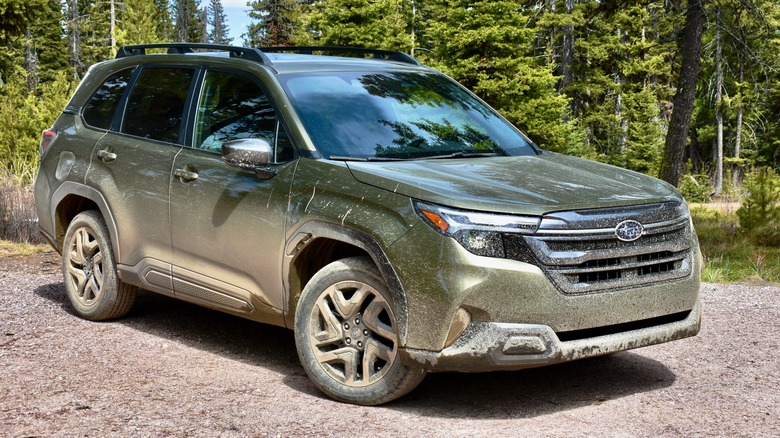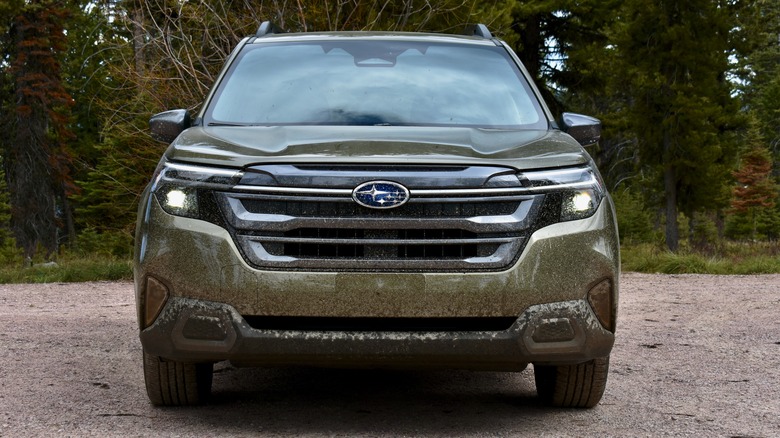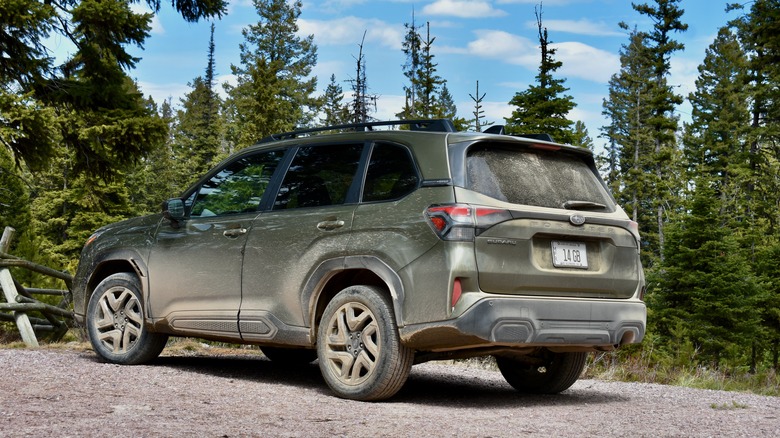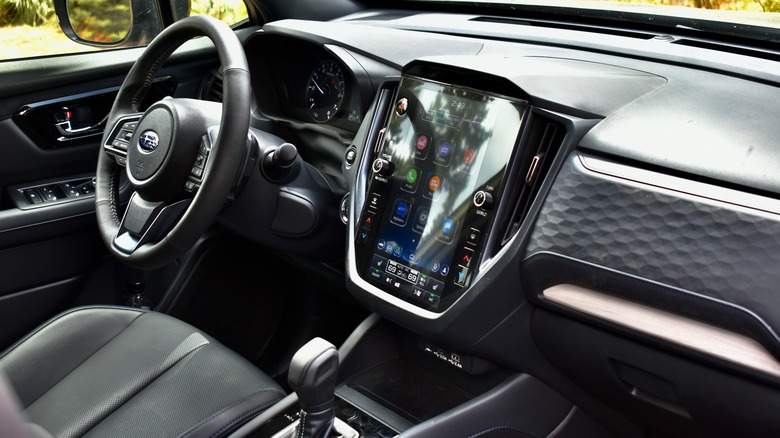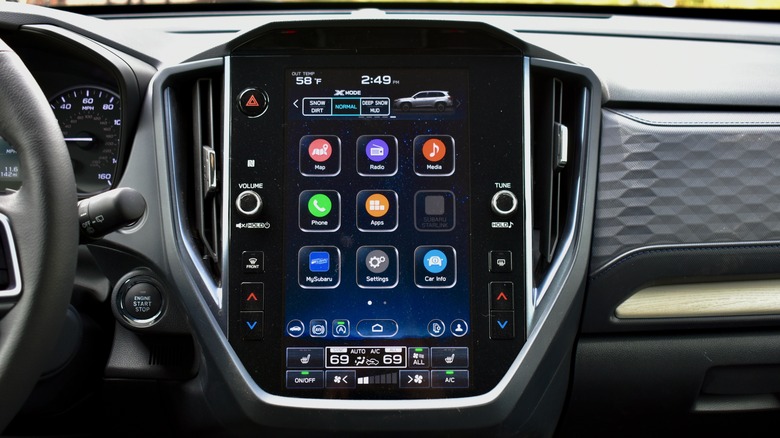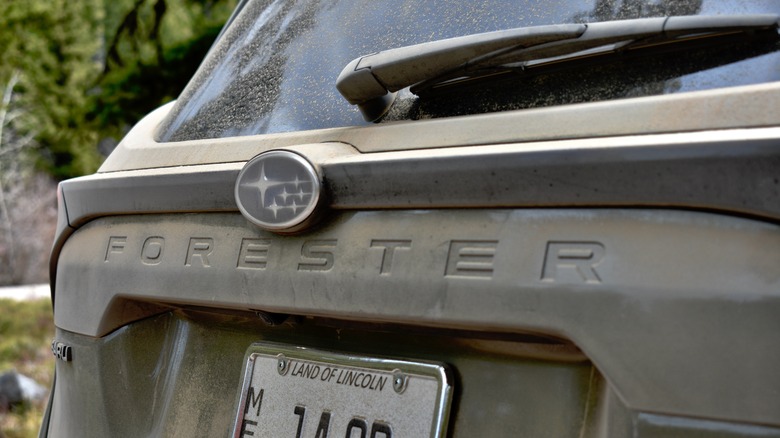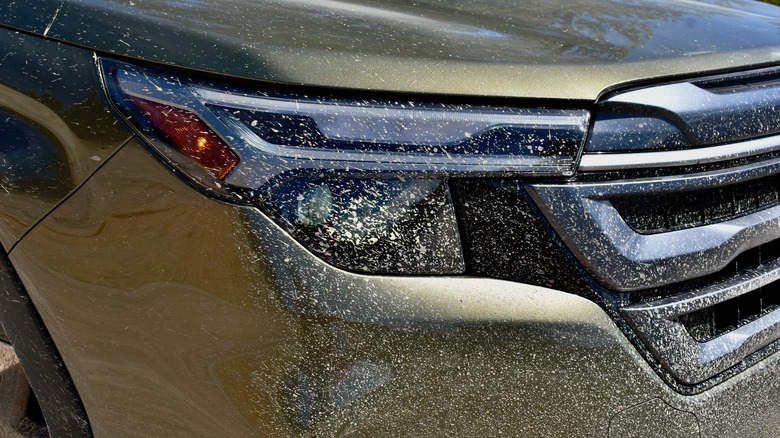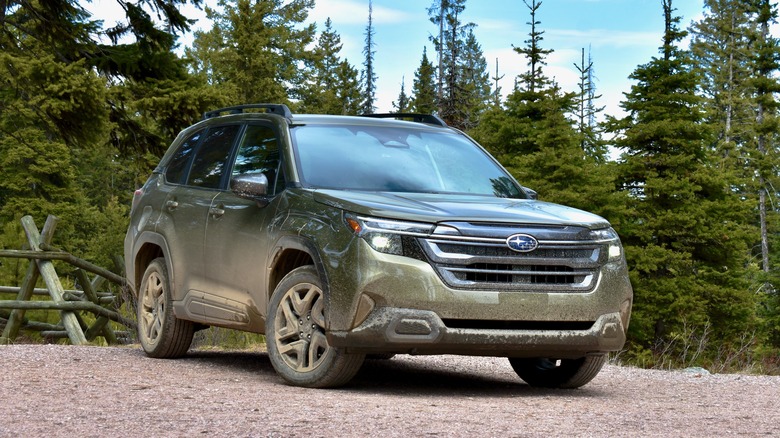2025 Subaru Forester First Drive: Redesigned SUV Preaches To The Choir
The Subaru Forester is an outsider that has become the establishment. The small-and-quirky first-generation Forester was part of what was then a niche of compact crossovers nicknamed "cute utes" by the automotive press. This category–which also included the original Ford Escape, Honda CR-V, and Toyota RAV4–served as alternatives to more traditional SUVs, and fit perfectly with Subaru's image as an offbeat brand.
But now these compact crossovers are the default choice for most new-car buyers, displacing traditional sedans. The Forester's evolution has reflected that, as the Subaru has grown bigger and more mainstream over the years. And now that compact crossovers have consolidated their power over the new-car market, the Forester's evolution has slowed.
The 2025 Subaru Forester has been redesigned, but it's hard to tell from reading the press kit, which tells of mostly small changes like a bigger touchscreen and increased sound deadening. That's because, at this point in its existence, the Forester just needs to keep pace with its traditional rivals and keep famously loyal Subaru customers happy, not challenge norms like the original.
More rugged, but not more distinctive
The original Subaru Forester was one of the few styling triumphs for a brand whose design ethos is best described as challenging. That first Forester was rugged yet adorable, with a design so simple and honest that it's surprising another automaker didn't come up with it first. This new Forester is not that.
The new styling, including a bigger grille, wraparound headlights, and boxier wheel arches, is arguably an improvement over the previous generation in that the 2025 Forester doesn't look like the version that came before it. The styling is the most noticeable change for this new model but, given that Subaru hopes the redesign will attract younger customers, it's hard to call it a success.
In the greater context of the automotive market, the new Forester also looks fairly generic, going for the same faux-tough look as many other crossovers. It's not exactly friendly enough for a brand ostensibly based on love, and a limp handshake compared to the cartoonish intensity of a Crosstrek Wilderness or WRX. Even the more extroverted Forester Sport trades eye-catching orange trim for a more subdued bronze.
Reinforced structure doesn't compromise cargo space
While the styling is a big departure from the previous-generation Forester, everything underneath is mostly unchanged. The new Forester uses the same Subaru Global Platform as the outgoing model, as well as most other current Subarus. The automaker does claim 10% greater torsional rigidity, though, thanks to a full inner frame made using stronger welding techniques, plus additional structural adhesive.
Dimensions are nearly identical to the outgoing model, but cargo capacity is up slightly to 29.6 cubic feet, or 74.4 cubic feet with the rear seats folded—notable for a vehicle ostensibly designed for utility. That leaves the Forester with less cargo space than rival crossovers like the Ford Escape, Honda CR-V, and Toyota RAV4 with the second row in place, although the gap closes when comparing cargo space with the rear seats folded. And existing Subaru owners will at least appreciate that the 2025 Forester is available with a hands-free power tailgate—a first for the brand.
Interior is more pleasing to the ears than the eyes
The interior doesn't look dramatically different, and as with cargo space the mostly carryover dimensions mean headroom and legroom are close to the outgoing Forester (and thus competitive with rivals).
Subaru did use what the automaker claims are nicer materials, but the effect is mixed. A honeycomb-pattern fascia on the passenger's side of the dashboard looks cool, but also looks like it will attract dust and clashes with the pattern on the rest of the dash and the piano-black door handle surrounds, themselves likely be easily scratched if anyone wearing rings reaches for a door handle. The various shades of gray and dark blue in a Limited we test drove (one step below the top Touring grade) all blended together like the runoff from Van Gogh's palette.
While the interior doesn't succeed on form, it does succeed on function. New front seats have extra bolstering to hold occupants more securely in place without the confining feeling thick bolsters can sometimes create. Additional sound insulation works wonders for cabin noise; wind noise was minimal at highway speeds despite the Forester's prominent mirrors. And that's much more important than questionable material choices.
Bigger screen maintains usability
The other big change inside the Forester's cabin is a bigger infotainment touchscreen, specifically the 11.6-inch portrait-oriented screen that's already appeared in several other Subaru models. Wireless Apple CarPlay and Android Auto are included with this screen, which is standard on all but the base Forester. Base models get a pair of stacked 7.0-inch screens, and require a cable to use Apple CarPlay and Android Auto.
The large screen doesn't look particularly elegant, but it's straightforward to use, with large, easily identifiable icons. The entire bottom of the screen is taken up by climate controls, which begs the question of why Subaru didn't simply retain the analog controls that were previously in that spot. However, it's hard to argue with the decision to move the X-Mode drive mode controls from a physical knob to an easier-to-reach spot in the top left corner of the touchscreen.
Subaru's EyeSight driver-assist system adds a third camera for better performance. As before, the EyeSight cameras are mounted behind the windshield, so they're less vulnerable to damage than the grille-mounted radar sensors used by competitors. Subaru also added a 360-degree camera system for 2025, but image quality is poor. Excellent outward visibility afforded by low window sills, a big upright back window, and thin roof pillars mean you won't really need it, though.
Slow but pleasant
The 2025 Forester continues with a 2.5-liter boxer-four engine connected to a continuously variable transmission (CVT) and standard all-wheel drive. Subaru claims some reliability-related improvements for the engine, as well as changes to the torque curve, but they don't make a big impact on the spec sheet. The 2025 Forester produces 180 horsepower and 178 pound-feet of torque, which is nearly identical to the 2024 model's 182 hp and 176 lb-ft.
CVTs don't have real gears, but Subaru still includes a manual mode meant to simulate the behavior of an eight-speed transmission (as opposed to a seven-speed before). The spread of possible ratios is now wider as well, but neither of these things help acceleration, which is as uninspiring as it was in the old car. A forthcoming Forester Hybrid should be an improvement, though, thanks to electric motor torque.
The 2025 Forester is still better to drive than its predecessor, though, largely thanks to a new dual-pinion steering rack shared with the WRX and Crosstrek. This made the steering feel much tighter than before, allowing for more precision when setting up for corners, which in turn made for smoother handling. As always the permanent all-wheel drive system meant there was always an excessive of grip on dry pavement.
Midcore off-roader
Instead of pavement, though, Subaru is more concerned with how the Forester performs on dirt and snow. Subaru was once distinguished by AWD, but now everyone has it, so the emphasis has shifted to off-road features like the Forester's 8.7 inches of ground clearance and X-Mode, which adjusts for loose surfaces and also includes hill-descent control.
The Forester is definitely a handy tool for dirt roads, but a Jeep or Land Rover rival it is not. Ground clearance and all-wheel drive can get you pretty far, but they don't make a genuine off-roader.
We didn't get stuck during any point during the Forester media drive, which included plenty of nasty surfaces, but came close on a section of road covered in deeply-rutted snow, which showed the limit of the Forester's all-season tires. That will be addressed by an updated Forester Wilderness with all-terrain tires, but Subaru isn't discussing timing for that model right now (the 2024 Wilderness remains on sale alongside the 2025 models, though).
A solid effort that will please existing Subaru owners
Scheduled to reach dealerships this month, the 2025 Forester starts at $31,090, which is $2,900 more than the 2024 model. The lineup includes base, Premium, Sport, Limited, and Touring trims, with a top Touring with all option boxes ticked priced at $44,083.
Standard all-wheel drive should continue to make the Forester a good value compared to rivals like the Honda CR-V and Toyota RAV4, which come standard with front-wheel drive, though. The Forester has plenty of other things to recommend it as well, including a long list of driver aids, decent passenger and cargo space, and much-improved driving dynamics. But its interior and powertrain remain weak points.
The 2025 Forester is also a genuine improvement over the outgoing generation, but not a big enough one to justify an immediate trade-in. When that time comes, though, this next-generation Forester should satisfy loyal Subaru owners. Subaru has an uncanny ability to make new generations of cars that are different but feel the same, incorporating updates without compromising familiarity. That's certainly the case here. The new Forester is not on the cutting edge of automotive trends like the original, but then again it doesn't need to be.
